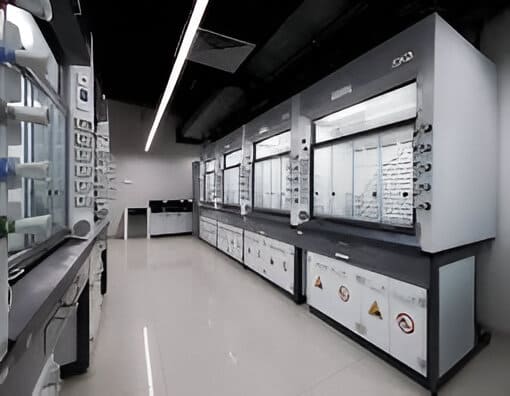What is a fume hood? How do fume hoods work?
What is a fume hood? A fume hood is an enclosure that safely contains and ventilates hazardous fumes, vapours, gases and dust generated by chemical processes performed in the fume hood. Sometimes called a Chemical Hood or a lab hood, a fume hood protects workers from inhalation of hazardous substances.The clear sliding window on a fume hood, called the sash, also shields workers from spills and splashes that may happen in the Chemical Fume Hood.Fume hoods are the workhorse of laboratory exhaust systems and are the most broadly used approach for local ventilation.
How does a fume hood work?
A Fume Hood functions by pulling air away from the user into the enclosure with a blower. The Fume Hood then filters and vents the air to the outdoors through a facility exhaust system. On the other hand, a fume hood may filter the air to remove dangerous fumes and then return the air to the room. Most fume hoods are equipped with gauges or alarms that warn the user of low airflow and potential exposure to dangerous fumes.
What is a fume hood used for?
Fume hoods allow user to work with potentially dangerous chemicals while minimizing the risk of exposure to toxic fumes. The sash (window) on a chemical hood allows the worker to view and manipulate objects within the enclosure while keeping fumes from toxic or volatile chemicals away from the worker’s face.
Industries that use fume hoods include:
• Semiconductor manufacturing
• Aerospace surface finishing such as passivation with nitric acid
• Research departments at colleges and universities.
What types of hazards can a fume hood protect the user against?
When do you use a fume hood? Generally, use of a Fume Hood is advised whenever working with hazardous chemicals. If the Safety Data Sheet (SDS) for the chemical you plan to use has warnings like “Toxic by inhalation” or “Do not breathe dust, fumes or vapors,” then a fume hood or other ventilation system is required.Fume hood use is also recommended when working with compounds that have a low boiling point, or chemicals that emit noxious odours.
Types of materials that should be used inside a Chemistry Fume Hood include:
• Any volatile materials
• Corrosive acids and bases
• Irritating vapours and dust
• Asphyxiating gases
• Open sources of volatile radionuclides
Examples of chemicals used with a fume hood include nitric acid and hydrofluoric acid.
Fume hood vs. Laminar flow hood: What’s the difference?
Chemical fume hoods are usually confused with laminar flow hoods, but they are not the same. Both use airflow as a means of protection, but the object of protection differs: Chemical fume hoods protect personnel, while
Laminar Flow Hoods protect the product.In a fume hood, air is pulled away from the worker to protect the worker from dangerous fumes. In contrast, a Laminar Flow Hood (also called a clean bench) blows filtered air outward. The smooth, non-turbulent airflow prevents contamination of the product such as a semiconductor wafer or biological sample from particulate matter.
Biosafety cabinet vs. Fume hood: What’s the difference?
Biological Safety cabinets are another category of laboratory equipment that is frequently confused with fume hoods. Both use airflow to protect, but the focus of protection is on different hazards: Fume hoods protect against chemical fumes and vapours, while
Biosafety Cabinets protect against pathogens and biological agents.A Biosafety cabinet (also called a biological safety cabinet or BSC) uses HEPA filters to remove infectious organisms from exhaust air. Depending on the class and type, a biosafety cabinet may also use HEPA filters on intake air to protect the product from contamination. By contrast, a Fume Hood does not generally use HEPA filtering on exhaust air vented outdoors.

